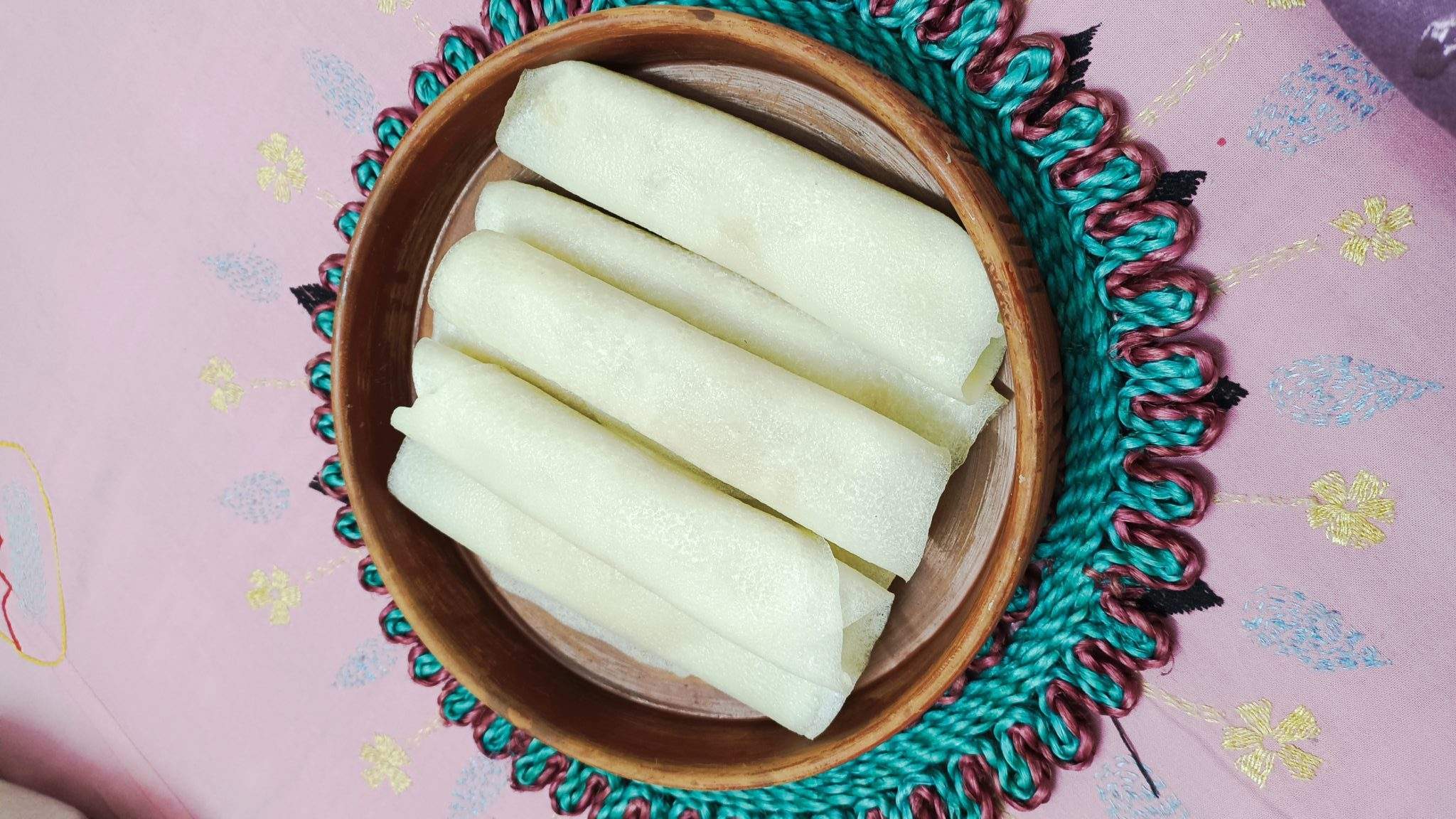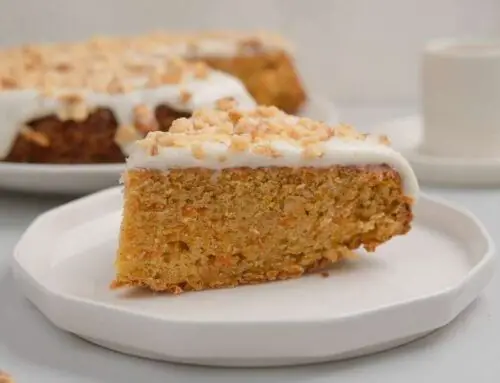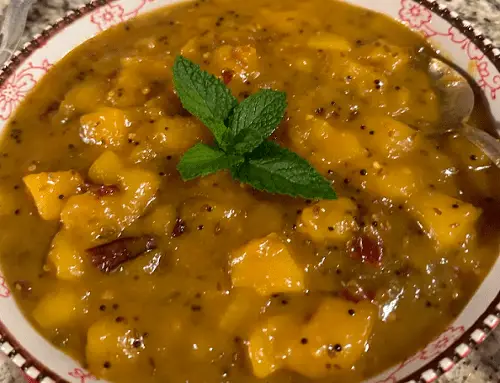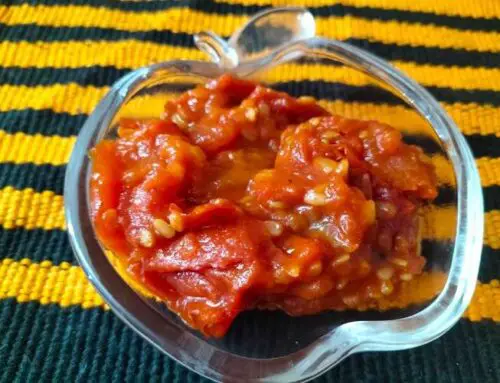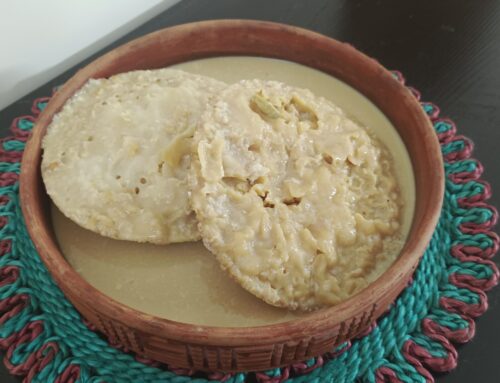As I walked into my childhood home, the smell of freshly made Patisapta wafted through the air. Memories flooded my mind as I made my way to the kitchen where my mother stood over the stove, flipping the thin, crepe-like pancakes with a practiced hand.
Patisapta pitha is a traditional Bengali sweet delicacy that is typically prepared during winter months. It is a type of pitha made from rice flour, and it is often filled with coconut, jaggery, or sweetened condensed milk.
In the past, Patisapta was traditionally made on a special type of leaf called “shil-nora pata,” which imparted a unique flavor to the dish. Nowadays, however, most people make it on non-stick pans or griddles. The batter for Patisapta pitha is typically made from a combination of rice flour and all-purpose flour, which is mixed with water and left to rest for several hours or overnight. This resting time allows the batter to ferment slightly, which gives it a tangy flavor and helps to make it lighter and fluffier.
Once the batter is ready, it is spread thinly on a hot griddle or pan, similar to making a crepe or pancake. The filling is then added to the center of the pancake, and the edges are folded over to form a neat roll. The Patisapta is then cooked until it is crispy and golden brown on the outside, and soft and chewy on the inside.
The filling for Patisapta pitha can vary depending on personal preference and region. Some people like to fill it with coconut, which is mixed with jaggery and cardamom for a sweet and nutty flavor. Others prefer to fill it with a mixture of sweetened condensed milk, sugar, and cardamom, which creates a rich and creamy filling that is reminiscent of caramel.
Patisapta was a winter treat in our family. As soon as the first cold breeze hit, my mother would start preparing the batter, soaking rice and lentils overnight before grinding them into a fine paste. The batter would then be mixed with jaggery and coconut, giving it a sweet, nutty flavor. As a child, I loved watching my mother make Patisapta. She would stand at the stove for hours, flipping the pancakes with ease, never burning a single one. I would sit on the kitchen counter, my feet dangling, as she would pass me one hot Patisapta after another, cautioning me to blow on it before taking a bite.
The first bite of Patisapta is always the best. The crispy edges give way to a soft, sweet center, bursting with the flavors of coconut and jaggery. I would savor each bite, closing my eyes and letting the warmth of the pancake fill me up. As I grew older, my mother started involving me in the process of making Patisapta. I would help her grind the rice and lentils, feeling the grains turn into a smooth paste under my fingers. I would mix in the jaggery and coconut, relishing the sticky sweetness that clung to my fingers.
Together, we would stand at the stove, flipping the Patisapta, laughing as we caught them mid-air. My mother would tell me stories of her own childhood, of how she and her sisters would make Patisapta on the coldest winter nights, huddled together around the stove. Years went by, and I moved away from home to study in a different city. Whenever I would come back to visit, my mother would have a fresh batch of Patisapta waiting for me. I would take a bite, close my eyes and let the warmth and nostalgia fill me up.
Since then, whenever I make Patisapta, I feel like I am carrying on a tradition that has been passed down through generations. Each bite reminds me of my childhood, of my mother’s love, and of the warmth and comfort that only this winter treat can bring.
Patisapta pitha is typically served warm and is often eaten as a dessert or as a sweet snack. It is especially popular during winter months when the weather is cold, and people crave warm and comforting foods. It is often served at festivals and celebrations, such as the Bengali new year, and is a staple at Bengali weddings and other special occasions.
In conclusion, Patisapta pitha is a delicious and unique Bengali sweet that is beloved by people all over the world. Its combination of crispy and chewy textures, along with its sweet and nutty filling, make it a favorite among those who have tasted it. Whether enjoyed as a dessert or as a snack, Patisapta pitha always satisfies anyone who tries it.
Ingredients
For Batter preparation:
- 2 cups rice flour
- 1/2 cup fine wheat flour
- water
- 2 tbsp sugar
For filling preparation:
- 3 cups milk
- 1 cup grated date jaggery
- 3 pc cardamon
- 1/4 cup rice flour
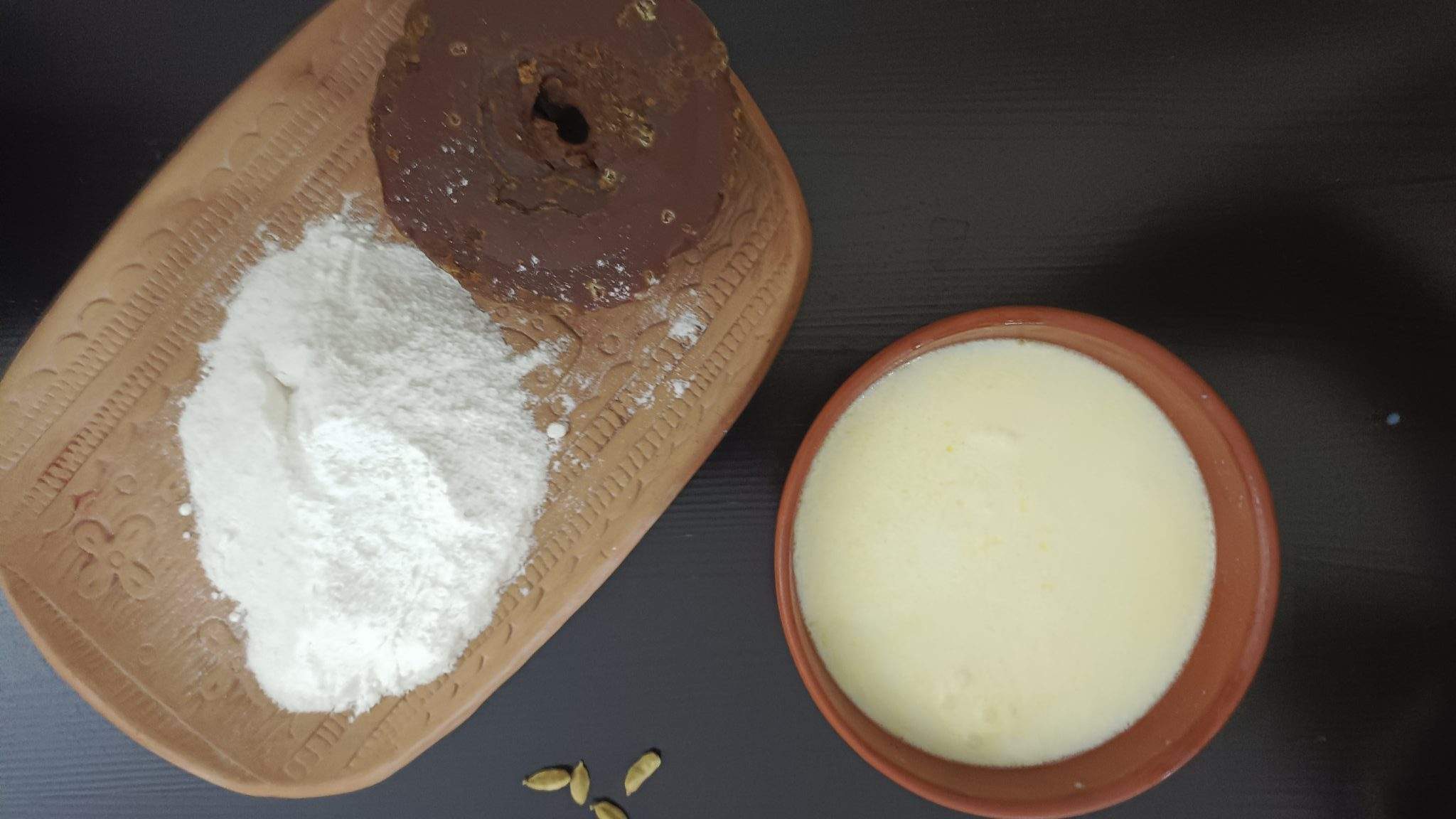
Instructions
- Take a bowl and add rice flour, wheat flour, and sugar and mix properly. Add a sufficient amount of water to make a smooth batter. The batter should not be too thick or too flowy.
- Boil the milk in a pan. Add cardamom. Boil it for 15 minutes on medium heat.
- Boil some water in another pan and add grated jaggery. Boil until the jaggery is fully melted. Turn off the heat. keep the pan aside.
- Pour the melted jaggery into the milk. Add the rice flour and stir continuously. After adjusting the thickness of the filling, take it on a plate and keep it aside.
- Heat a pan on medium heat and brush a little oil on it. Add 1 big spoonful of batter and spread the batter over the pan. Try to make a circular sheet with the batter.
- Put some filling on the sheet and roll it smoothly. Give it a shape like the picture.
Nutrition

